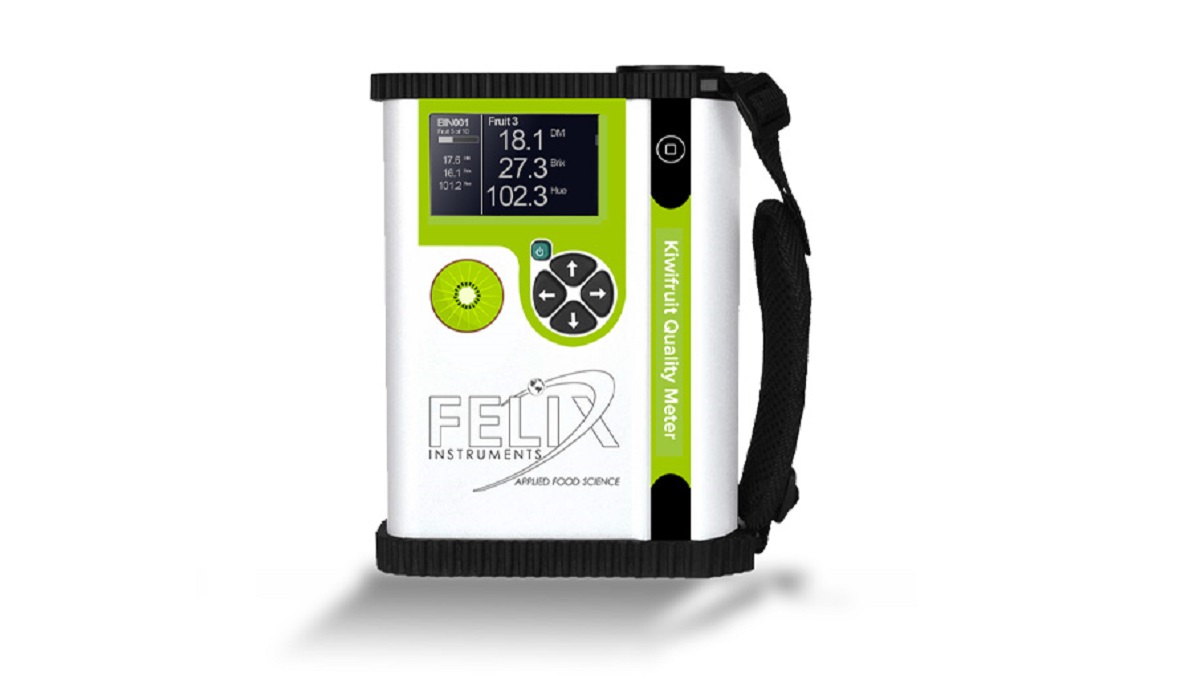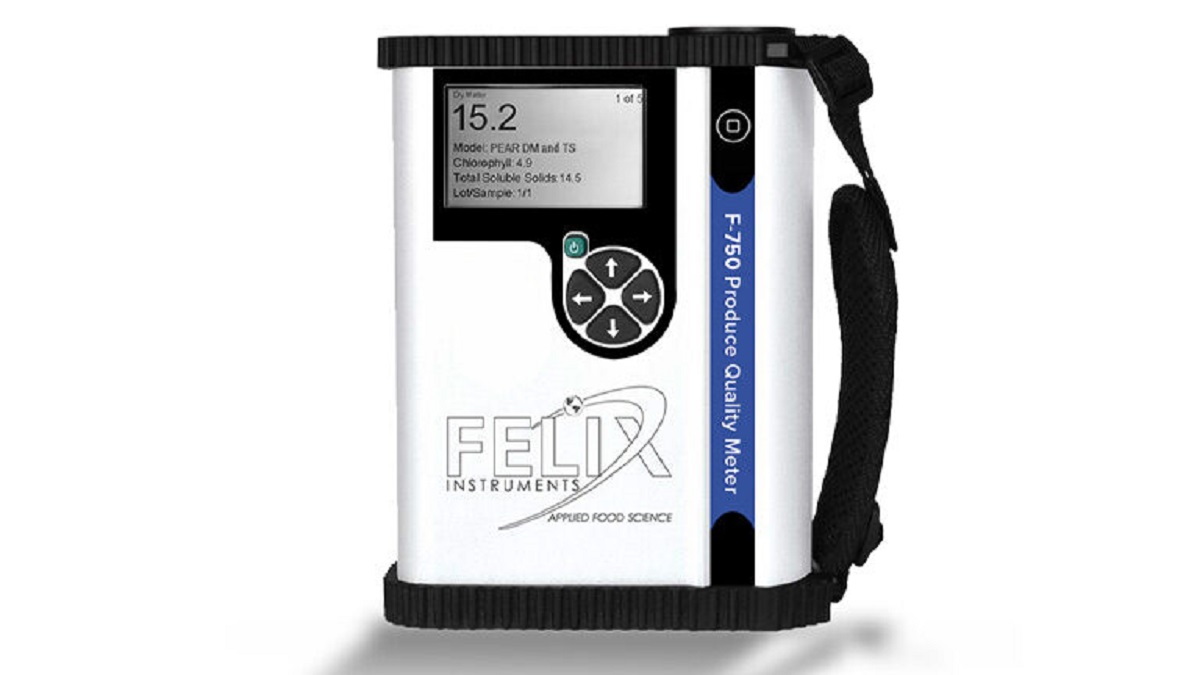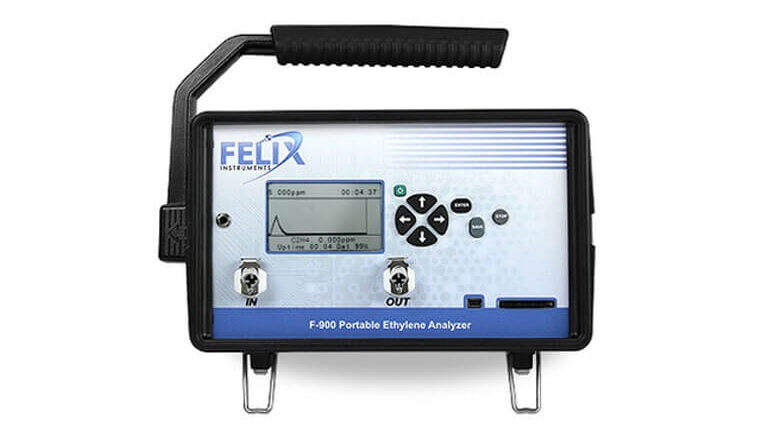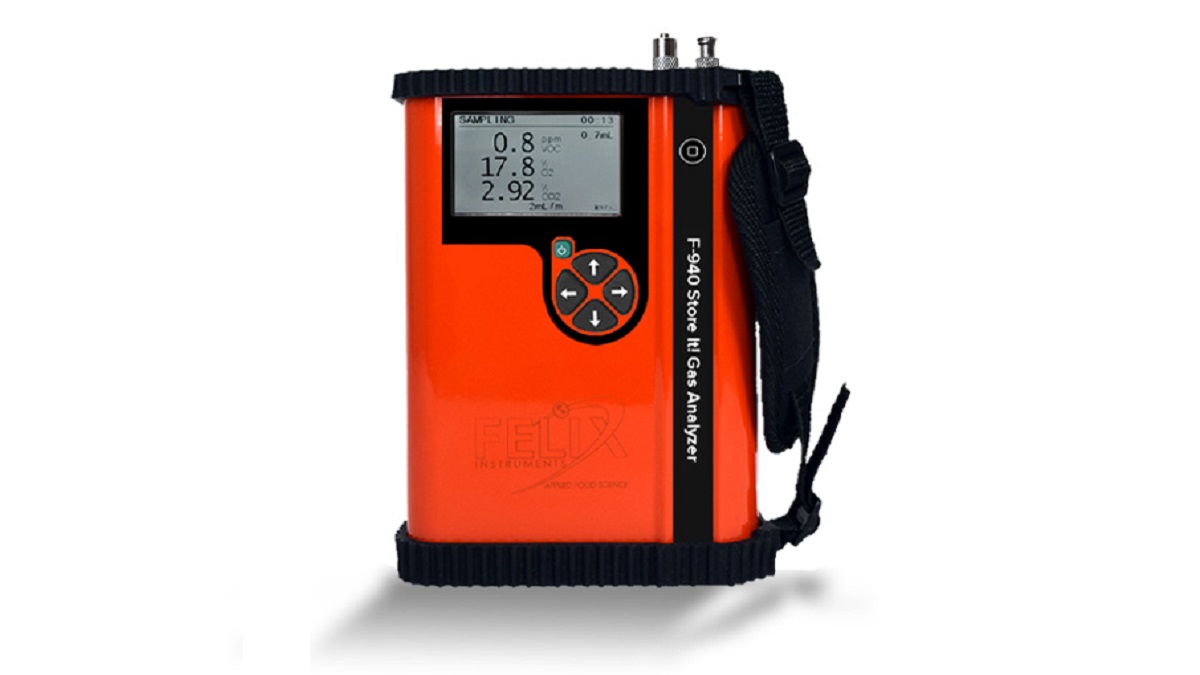

Felix Instruments
Measurements
How to Improve Mango Quality?
Research on mango in 2023 focuses on finetuning available information, whether postharvest treatment or optimizing chemometric models
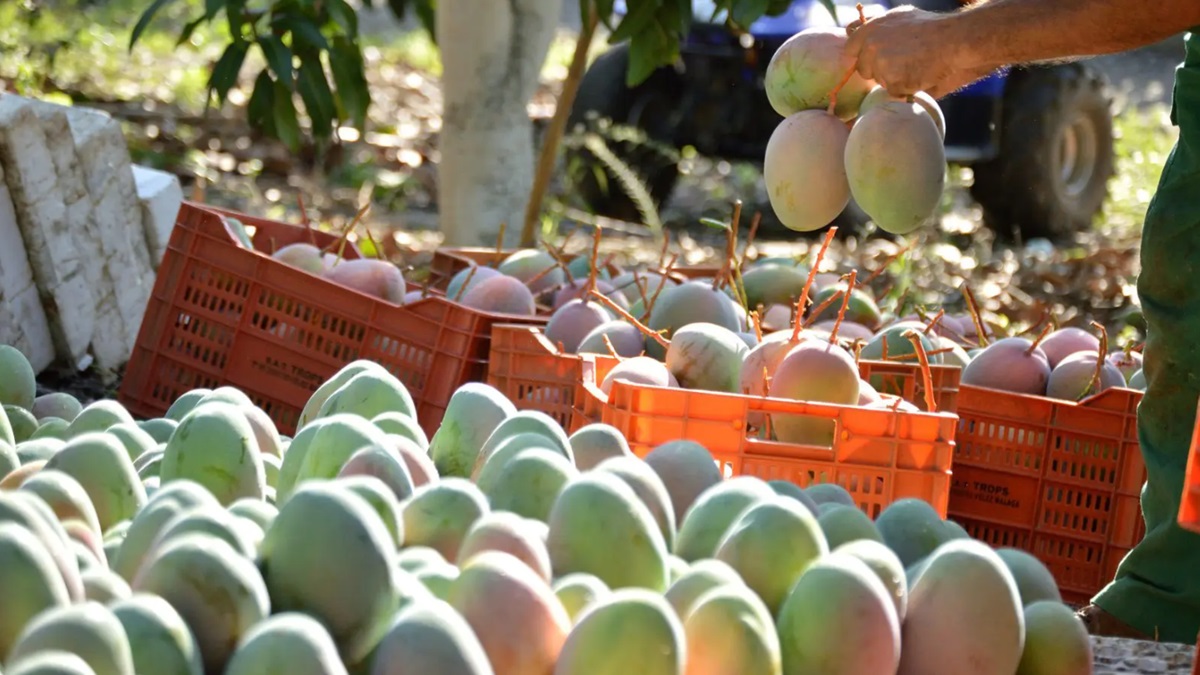
Mango is one of the most important tropical fruits because of its taste, nutraceutical value, and the various processed products it can be made into. However, shorter shelf-life due to a fall in quality and safety due to chilling injury, diseases, incorrect maturity at harvest etc., can impact export. This article explores a few representative research findings that could solve various challenges in the mango supply chain.
Impact of Scion/Rootstock Interaction on Mango Quality

Figure 1. “Respiration rate on the 3rd (A) and 6th day (B) of storage compared to the normal ripening (0 day) as affected by scion/rootstock combinations in mango,” Shivran et al. (2023). (Image credits: https://doi.org/10.3390/agronomy13010204)
One method of addressing factors like chilling injury and disease susceptibility leading to deterioration of postharvest mango quality and nutritional value is using rootstocks, whose interaction with scions can change scion genotype and performance.
Experiment
Indian scientists Shivran et al. tested 15-16-year-old trees of grafts on three rootstocks. The high-yielding scion varieties were Amrapali, Dashehari, Pusa Arunima, Mallika, and Pusa Surya; and the rootstock varieties were Kurukkan, K-5, and Olour. An orchard was planted with six trees from each of the 15 graft unions.
The fruits were harvested at maturity, counted and weighed for yield/tree, and then divided into three groups. The first group was immediately tested, and the other two sets were stored and analyzed on the 3rd and 6th day of storage. Each fruit was evaluated for individual fruit weight, pulp and stone weight, pulp-to-stone ratio, fruit peel thickness, total soluble solids content (SSC), total acidity, and respiration rate. Healthy leaves were analyzed to identify DNA and simple sequence repeats (SSRs).
Grafting influenced and changed the scions’ mango yield, yield efficiency, and all the studied physicochemical quality parameters. Olour was the best rootstock for improving mango yield and fruit quality and a long shelf life. The mangoes had higher SSCs, acidity, fruit peel, and lower weight loss and respiration, see Figure 1. However, the impact on quality depends on the scions.
Of the 35 SSRs examined, 24 showed variations among the genotypes. Eight SSRs were associated with eight different physiological traits, and the SSRs for yield efficiency and fruit weight had the most variability.
Takeaway: Olour is the dependable rootstock for the mangoes tested. Pusa Arunima and Pusa Surya scions had the best fruit quality after grafting. The experiment used destructive sampling techniques to measure fruit quality. Parameters like SSC and acidity can be analyzed in real-time using non-destructive Near-Infrared Spectroscopy-based tools like the F-751 Mango Quality Meter from Felix Instruments Applied Food Science. Moreover, respiration rate can be measured as carbon dioxide produced or oxygen used with the F-950 Three Gas Analyzer, the F-940 Store It! Gas Analyzer, or the F-920 Check It! Gas Analyzer.
Predicting Mango Dry Matter With Near-Infrared Spectroscopy

Figure 2. “Mean dry matter % for different mango fruit samples and data sets. The models were built using data from ‘Keitt’ and ‘Kent’ samples and tested on the open-access dataset,” Mishra and Woltering 2023. (Image credits: https://doi.org/10.1016/j.postharvbio.2023.112335)
Near-infrared (NIR) spectroscopy is a trusted technique for measuring fruit quality in the mango supply chain and conducting research.
Scientists continue to make the chemometric models robust so that the quality analysis instruments can make future predictions more applicable to mangoes of different geographies, varieties, orchards, and years.
Experiment
However, one of the problems with producing a robust analytical model is that calibration data sets are specific and not generalized, and there are outlier data points.
Mishra and Woltering tried down-weighting outliers to reduce their contribution to the model. The down-weighting methods tested were iterative reweighted PLS (partial least-squares) that dealt with outliers in spectral measurements and responses (dry matter). The instrument used was the F-750 Produce Quality Meter (Felix Instruments, Camas, USA).
- The data set for calibration was obtained from Brazilian ‘Keitt’ and ‘Kent mangoes sourced in the Netherlands in 2020, see Figure 2.
- The test data set differed from the calibration set and was derived from different cultivars from Australian ‘Honey Gold,’ Calypso™,’ ‘Kensington Pride,’ and ‘R2E2′ harvested in 2019.
Iterative reweighted Covariates Selection (irCovSel) was used to select features or wavelengths. The irCovSel simplifies the model by reducing the number of features used.
The model developed using the new technique was more robust and could predict mango quality better, and the root mean squared error of prediction was generally reduced from 1.03 % to 0.75 % DM.
The new model predicted mango quality accurately, irrespective of various regions, cultivars, and harvest years, better than the standard PLS model, with an RMSEP of only 0.89 % DM compared to 2.06 % DM for standard models.
Takeaway: The new chemometric model can be used by mango growers globally for more accurate measurement of dry matter prediction, a vital quality and harvest index for mango.
Intermittent Cooling and Warming to Reduce Chilling Injury
Harvested mangoes ripen and decay fast in ambient conditions. Refrigeration used as the standard for quality preservation in commercial supply chains causes chilling injury in mangoes, as the fruit is sensitive to temperatures below 13°C. It results in browning, black lesions, loss of ripening, and higher susceptibility to decay, worsening symptoms under ambient conditions after refrigeration.

Figure 3. “Temperature setting procedure of ICW for mango storage. ICW, intermittent stepwise cooling, and stepwise warming,” Jiang et al. 2023. (Image credits: https://doi.org/10.1016/j.lwt.2023.1147409)
Intermittent warming and low-temperature conditioning used individually are still far from optimal.
Experiment
Therefore, Jiang et al. tested a new technique of intermittent stepwise cooling and warming (ICW) on ‘Guifei’ mango. The process involved subjecting mangoes to initial cooling (15 °C to 10 °C to 5 °C), followed by three cycles of warming and cooling from 5 °C to 20 °C back to 5 °C, with a warming cycle at the end (40 days). See Figure 3 for stepwise temperature changes.
The scientists evaluated the effect of the ICW on chilling injury during cooling and later traced the ripening parameters, antioxidation processes, and gene expression of cold response.
Due to higher ethylene production and respiration rates, ICW maintained normal ripening in mangoes, producing good color development, SSC, titrable acidity, chlorophyll, and carotenoid content. The treatment also reduced reactive oxygen species production, electrolyte leakage, and malondialdehyde. There was an increase in antioxidant activities and accumulation of phenolics, glutathione, flavonoids, and ascorbic acid. Increased expression of genes controlling response to low temperatures helped in cold tolerance to reduce the chilling effect in mango fruits.
Takeaway: The scientists propose ICW as a strategy that can be used for postharvest storage of mangoes.
Coatings and Mango Quality Preservation

Figure 4. Graphical Abstract of the experiment by Wang et al. 2023. (Image credits: https://doi.org/10.1016/j.fpsl.2023.101133)
China will account for 30 % of global fruit and vegetable waste by 2030. Since the nation is also a significant consumer and exporter of fresh produce, efforts are focused on reducing postharvest waste.
Coatings that form a thin film on the peel of fresh produce form a physical barrier and inhibit physiology to preserve mango quality. Natural and edible materials like chitosan, sodium alginate, and essential oils are popular for maintaining freshness and antibacterial and UV-blocking properties.
Experiment
Wang et al. focus on the effectiveness of coating technology used for applying the coating in maintaining freshness and mango quality in storage. They tested four standard application methods- dip coating, brush coating, spray coating, and electrostatic spraying. They examined the film microstructure, uniformity, and quality produced by the four methods. The scientists used a chitosan solution with cinnamon essential oil for the active layer and sodium alginate coating with TiO2 for the protection layer.
Scanning electron microscopy, fluorescence microscopy images, and atomic force microscopy showed that dip coating produced the smoothest film surface (see Figure 4).
The water-sensitive paper test demonstrated that the electrostatic spraying produced finer droplets than the spray coating. Electrostatic spraying also resulted in the thinnest films and the best transfer efficiency.
Mango quality measured as firmness was best in dip and electrostatic spraying methods. Browning that affects mango quality and shelf life was less as measured by the browning index (BI) and total phenol content (TPC) indices. Also, malondialdehyde content, a lipid peroxidation product and an indicator of oxidative damage, was less in these two methods. The quality preservation was similar in both coating methods.
Electrostatic spraying methods had the fastest drying time and used less coating solution. It can achieve automated coating that can save resources and production costs.
Takeaway: Electrostatic spraying was considered the best coating method for preserving mango quality as it was economical and sustainable.
Ripening Patterns’ Impact of Mango Quality
Ascorbic acid content is a crucial quality parameter in mango. It is a substrate for hormone production and an antioxidant, and it is needed to reduce chilling injury in mangoes. However, the impact of ripening on ascorbic acid production and metabolism was unknown.
Experiment
Wang et al. studied the effect of preharvest and postharvest ripening on mango quality and
ascorbic acid production and metabolism in ‘Guifei’ mangoes. Two groups of fruits were considered. One set was harvested at maturity and ripened “off-tree” through ethylene treatment, and another set was allowed to ripen on the tree. Quality parameters measured were peel or external color, SSC content, and titrable acidity.
Mangoes that ripened on the tree-ripened later and had better fruit quality. Ethylene production was lower, color changes happened later, and SSC and titrable acidity were higher. Malic acid was the primary organic acid instead of citric acid.
Ascorbic acid levels were directly correlated with the enzyme galactose-1,4-lactone dehydrogenase (GaILDH) that regulated the acid’s biosynthesis. GaILDH and ascorbic levels fell as ripening proceeded, but the concentrations of enzymes that metabolized ascorbic acid increased.
Takeaway: If possible, mangos should be allowed to ripen on trees as their quality and ascorbic acid content is better than those of postharvest ripened fruits. The quality parameters of external color, SSC, and titrable acidity can be measured in experiments with F-750 Produce Quality Meter or F-751 Mango Quality Meter.
Reducing Mango Waste
As the research above shows, maintaining mango quality requires many measures to address local and supply chain challenges. Notably, the study is focused on finetuning available information, as much of the basic research has already been finished. Precision tools such as those produced by Felix Instruments analyze fruit quality through non-destructive means and give results in real-time to help scientists reduce fresh produce waste.



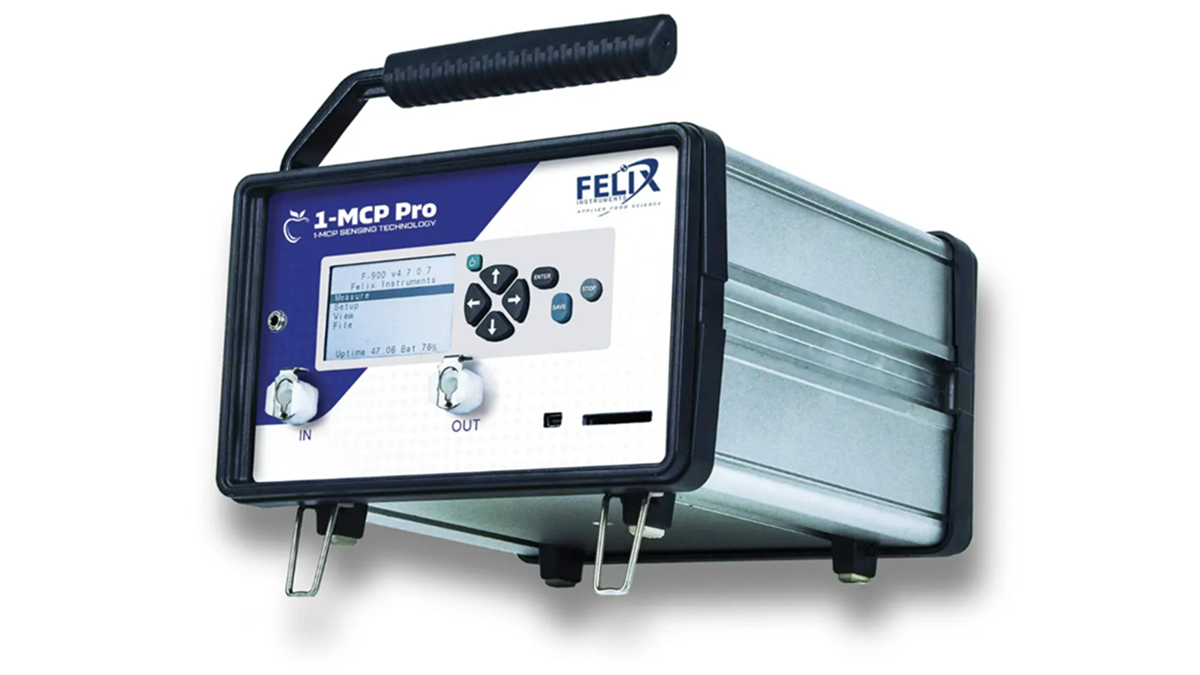
.jpg)
